Key takeaways:
- Album artwork serves as a visual gateway that enhances emotional connections to the music, influencing perceptions and narratives.
- Key elements such as color, typography, and symbolism play crucial roles in conveying themes and emotions, enriching the overall listening experience.
- Thematic explorations in album artwork (e.g., nature, light and dark contrasts) deepen our understanding of the music and invite personal reflections.
- Notable artworks like Pink Floyd’s “The Dark Side of the Moon” and Björk’s “Post” illustrate how visuals can provoke profound introspection and emotional responses.
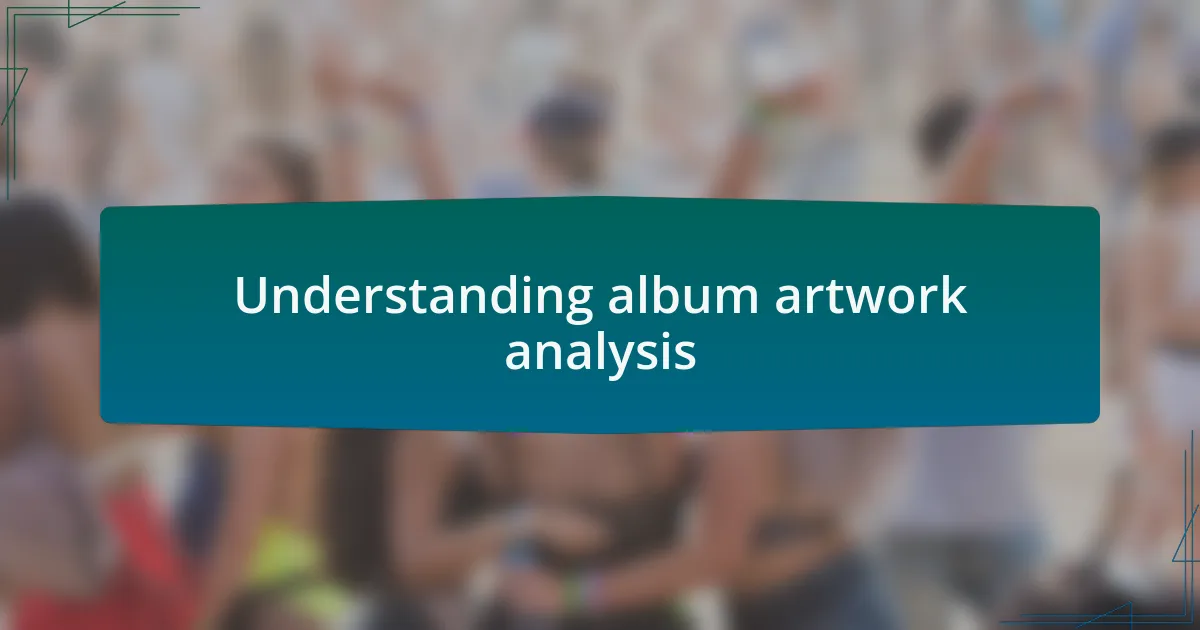
Understanding album artwork analysis
When I dive into album artwork, I’m often struck by how much it reflects the artist’s vision. Take, for example, Pink Floyd’s “The Dark Side of the Moon.” That iconic prism doesn’t just look cool; it encapsulates the album’s themes of conflict and the spectrum of human experience. Isn’t it fascinating how a single image can convey such profound ideas?
As I analyze album covers, I find myself asking, “What story is this artwork telling me?” Sometimes, it’s not just about the aesthetics; it’s about the emotions and memories it evokes. I remember the first time I saw the cover of Fleetwood Mac’s “Rumours.” The imagery resonated deeply with me, capturing the complexities of love and relationships in a way that mirrors the music inside.
I also notice how the choice of colors, typography, and imagery can signal the mood of the album. Take Billie Eilish’s recent works—they often feature muted tones and minimalistic designs that reflect her introspective lyrics. It makes me wonder how much thought goes into each element of the artwork. The power of visual storytelling can be just as impactful as the music itself, creating a multi-layered experience for the listener.
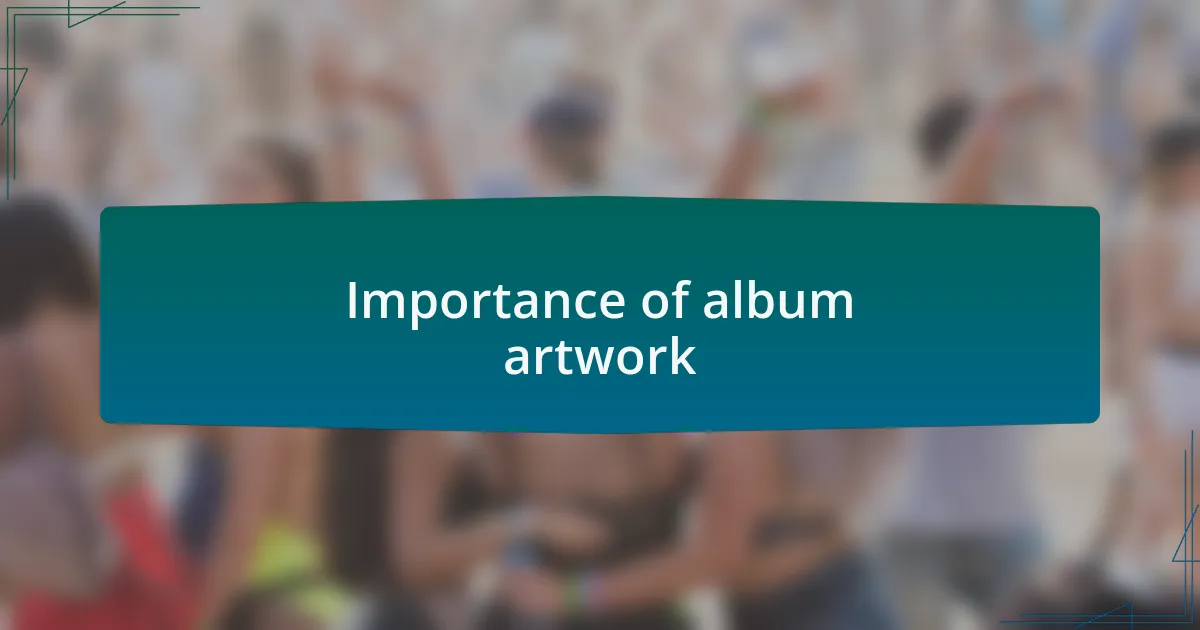
Importance of album artwork
Album artwork serves as a visual gateway into the artist’s world, often setting the stage for what to expect musically. For instance, when I first encountered the cover of Adele’s “21,” I was instantly drawn to the starkness of the image, which mirrored her powerful, emotional narratives. How can a simple photograph evoke such depth? It shows that every detail in the artwork can enhance the listener’s emotional journey.
In my experience, something as subtle as the texture of an album cover can also play a crucial role in how we perceive the music. I recall unboxing my vinyl of The Beatles’ “Sgt. Pepper’s Lonely Hearts Club Band” and marveling at the vibrant, psychedelic illustrations. That tactile connection made the music feel more intimate, almost as if the art had transformed the listening experience into a personal moment. Have you ever felt that way when handling physical albums?
Moreover, album artwork can become iconic, influencing not only the music but also broader cultural trends. When I think of Nirvana’s “Nevermind,” the memorable baby swimming toward a dollar bill represents a critique of consumerism that resonates beyond the music itself. It makes me reflect on how a single piece of art can have lasting implications, opening discussions that go far deeper than just the sound waves.
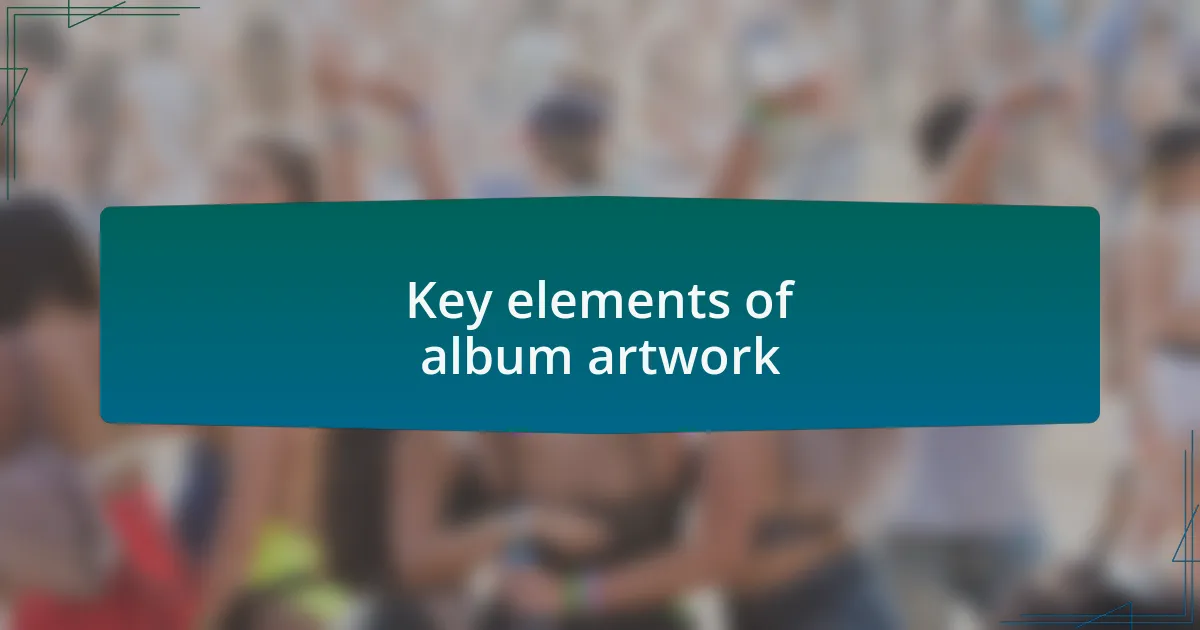
Key elements of album artwork
When analyzing album artwork, I often find that color choices are pivotal in conveying the mood of the music. For instance, when I first saw the vibrant orange and pink hues on the cover of Tame Impala’s “Currents,” it felt like a burst of energy that perfectly encapsulated the sounds within. How can a simple palette evoke such a strong response? It reminds me that colors do more than just please the eye; they tap into our emotions and expectations.
Another crucial element is typography. The fonts and styles used can reveal so much about an artist’s identity and the themes of their work. I still remember the bold, jagged letters on My Chemical Romance’s “The Black Parade” cover; they exuded a sense of urgency and rebellion that matched their musical intensity. Have you ever paused to consider how a font can steer your emotional reaction to an album? This seemingly minor detail can be essential in crafting a cohesive narrative between the visuals and the sounds.
Symbolism is also a powerful factor that can deepen our understanding of an album’s message. In the case of Radiohead’s “OK Computer,” the haunting imagery of surreal landscapes triggered a sense of unease, perfectly reflecting the album’s themes of alienation in the digital age. I often wonder how many listeners take a moment to ponder the meaning behind such images or if they simply appreciate them as aesthetic choices. Exploring these symbols can offer insights that enrich the listening experience, prompting us to connect the dots between emotion, art, and sound.
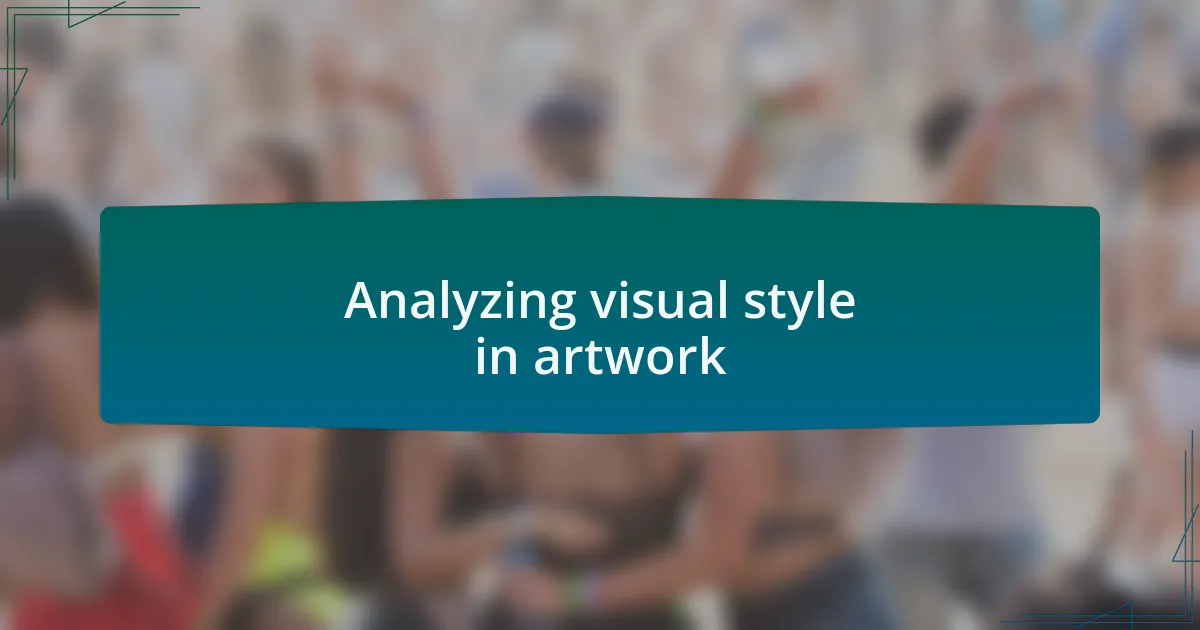
Analyzing visual style in artwork
It’s fascinating to dive into the visual style of album artwork and see how it can transform our understanding of the music. Take the minimalist approach on Bon Iver’s “For Emma, Forever Ago,” for example. The simple yet poignant imagery evokes a sense of solitude that echoes the introspective themes of the album. I find myself drawn in, often asking how such a stripped-down aesthetic can communicate complex emotions so effectively.
Textures play a significant role in the visual presentation as well. When I first laid eyes on the grungy, layered artwork of Nirvana’s “In Utero,” I felt an immediate connection to the rawness of the sound. The rough edges and chaotic arrangements mirror the visceral nature of their music. It leaves me wondering: can the tactile quality of artwork influence our perception of what we hear? I believe it does, allowing us to engage not just visually but also emotionally.
I often reflect on how the overall concept of the artwork ties everything together. For instance, the vibrant, chaotic collage on MGMT’s “Oracular Spectacular” draws you into a world of psychedelic experiences that complement their eclectic sound. I can’t help but think about how this ambition in visual storytelling encourages listeners to immerse themselves fully in every note. Do you think a well-executed visual style can elevate the music to a new level of appreciation? I certainly do, as it creates a richer, more memorable experience.
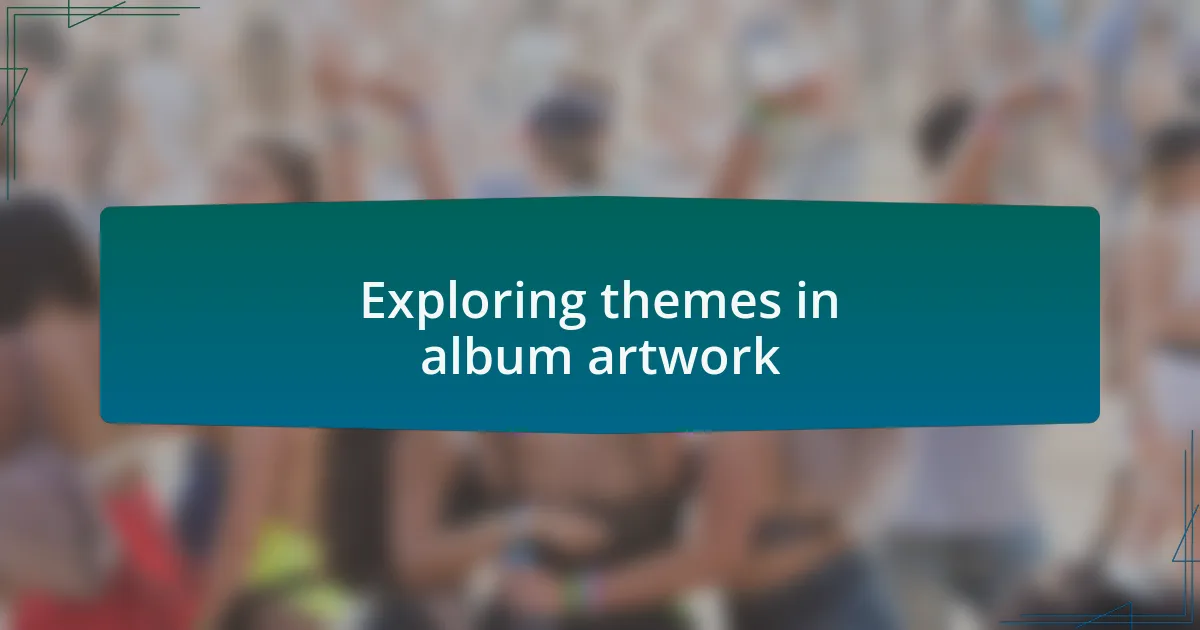
Exploring themes in album artwork
When exploring the themes in album artwork, I often find that they serve as visual narratives that enhance our understanding of the music’s message. For instance, consider the haunting imagery on Radiohead’s “OK Computer.” The surreal landscapes and abstract shapes invite me into a world that mirrors the album’s anxious exploration of technology and alienation. I can’t help but wonder how much these visuals shape our interpretation of the music’s complex themes.
Nature is another powerful theme that emerges in album artwork. I recall the breathtaking cover of Fleet Foxes’ self-titled album, which encapsulates the harmony and tension found in their folk melodies. The rich forest imagery resonates with the earthy, organic sounds, inviting me to connect more deeply with the records. Isn’t it fascinating how a single image can ignite a sense of nostalgia or longing before we even press play?
The juxtaposition of light and dark is also prevalent in many designs. Take the cover of The Weeknd’s “After Hours,” where the striking contrast of neon lights against shadowy figures evokes an emotional chaos that echoes the album’s themes of love and heartbreak. Personally, I feel an instant pull into this world of duality, prompting questions about how our darkest moments can inspire the most vivid forms of artistry. This kind of thematic exploration in album artwork enriches our listening experience, doesn’t it?

Personal reflections on favorite artworks
I have always been captivated by the cover of The Beatles’ “Revolver.” The swirling psychedelic colors and abstract faces convey a sense of experimentation and evolution, which truly reflects the band’s groundbreaking shift in sound. Every time I look at the artwork, it sparks curiosity in me about the creative processes that led the Beatles to redefine music so profoundly. How often do we forget the visual narrative that accompanies such iconic sounds?
One artwork that resonates with me deeply is Björk’s “Post.” The vibrant imagery of her jumping amid surreal landscapes feels like an invitation to embrace life’s chaotic beauty. I remember the first time I saw it; it sparked a rush of emotions that matched the album’s eclectic sounds. It makes me question how our surroundings influence our artistic expressions and even our emotional states. Can a piece of art truly encapsulate the vastness of human experience?
When I reflect on the cover of Pink Floyd’s “The Dark Side of the Moon,” I feel a profound connection to its simplicity and complexity. The iconic prism splitting light feels like a metaphor for the beautiful spectrum of life’s experiences. Every glance makes me ponder the intricacies of our psyche, how different elements of our lives intersect and diverge. Isn’t it remarkable how such a minimalist design can provoke such deep introspection?